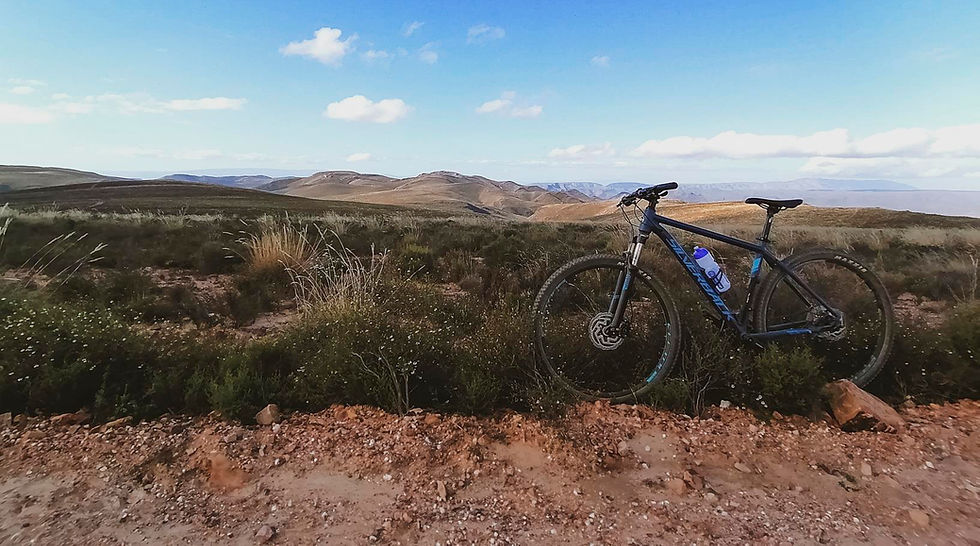A flower, a pragmatist, a frog and a mountain.
- Keir Lynch

- Jan 4, 2021
- 5 min read
“No matter how hard the past, you can always begin again.”
Buddha
The 1st of January has always been a day of dreams and visions. A chance to put to bed the challenges of the past and welcome the dawn of potential opportunities. Never have the promises of a new year been more needed than after the world was rudely introduced to its new reality in 2020, with the Coronavirus setting the scene for the prophesised future of pandemics, climate upheaval and extinction debt. If ever an opportunity was needed to take a deep breath, garner strength, and roll up one’s sleeves, it was the 1st of January 2021.

We were provided with a parable on the first day of twenty-twenty one with a story of a flower, a pragmatist , a frog, and a mountain. A story that provided inherent value of what can be achieved in a decade.
the flower

Shaw’s Pass, between the towns of Hermanus and Caledon in South Africa’s Western Cape Province, is well known to botanists and plant enthusiasts for the incredible array of threatened, rare and endemic plant species. As with most assemblages of biodiversity, it comes down to geology, and the Shaw’s Pass habitat includes an overlay of soils that fashion an ecotone of shale, ferricrete, and sandstone ecosystems which give rise to the spectacular floral diversity on the pass. In 2009 one of the distinct species, Erica jasminiflora, was thought to be on the precipice of extinction. Conservationists and enthusiasts had been noting the decline of more than 90% of the population across its range and less than 5 plants held on at Shaw’s Pass. The Custodians of Rare and Endangered Wildflowers (CREW), a citizen science initiative that involves members of the South African public in the surveying, monitoring and conservation of plants, was on extinction watch, returning year after year to fewer plants and leaving year after year with less hope.
the pragmatist

In 2008, Antony van Hoogstraten bought a farm, comprising mountain catchment in the Kleinrivier Mountains and lowland ecosystems in the Hemel-en-Aarde Valley. What Antony actually bought was land that was in the grip of ecocide. Invasive alien plants, one of the largest threats to ecosystems and biodiversity, dominated the farm. A sea of hakea, pine and wattle washed down the mountain and what would have scared off most of us was welcomed as a challenge to be overcome by Antony. He put together a team to begin waging war on the aliens and over the past 12 years has spent every Tuesday and Thursday (barring public holidays and 2020 lockdown restrictions) clearing invasives on his and neighbouring farms. After two years of intensive clearing a wildfire swept through the mountains, and what is often thought of as devastation, birthed a botanical extravaganza. By this stage Erica jasminiflora had been on life support for generations, so it was a major surprise when an enthusiast stumbled across the plant on the previously invaded habitat on Anthony’s farm. The fire had given the species the opportunity to germinate, but Antony and his clearing team had given the species a chance to survive. The news electrified fynbos enthusiasts and a site visit organised by Ismail Ebrahim, the project manager for the Cape Florstic Region wing of CREW, determined that a population of 2000 plants had emerged and while the species is still Critically Endangered, it is no longer sliding into extinction.
the frog

While we knew the story of the Erica very well, our involvement with Antony was the result of fauna and not flora. The Endangered Wildlife Trust’s Dr Jeanne Tarrant, manager of the Threatened Amphibian Programme and 2020 Whitley Award recipient, launched a project in the Western Cape supported by the Amphibian Survival Alliance, which focuses on some of the most threatened and range restricted frogs of the Western Cape. Bionerds had successfully partnered with Jeanne and the Endangered Wildlife Trust (EWT) in the past, most notably with the Averting Extinction Bitis albanica (Albany Adder) project in the Coega Bontveld ecosystems in the Eastern Cape, and we were overjoyed to again assist in the implementation of a critical project for the EWT and continue our partnership with the organisation. One of the key species selected for the project, the recently described Moonlight Mountain Toadlet, Capensibufo selenophos, was a target species for the surveys in 2020. The type locality for the toadlet is the Maanschynkop Nature Reserve but recent surveys have not recorded breeding activity or incidental records of adults, so when the opportunity presented itself to survey Anthony’s farm, which borders Maanschynkop, we prioritised a site visit. Active alien clearing and follow up operations on the property has led to incredibly productive ecosystems and the cleared catchments have resulted in springs seeping into peat wetlands, the exact habitat that the toadlets prefer.
The joy was palpable when we found tadpoles in breeding pools, while shortly thereafter we encountered egg strings and adult frogs. To have recorded new breeding locality was excitement enough, but to do so on a property where a landowner has expressed such commitment to conservation through his actions that the ecosystems are in a near pristine condition, is perhaps the greatest reward for anyone working with threatened species and habitats.
the mountain
The targets for the EWT project were not limited to uncovering new populations of the threatened and range restricted frogs of the Western Cape, but also to secure their habitat through the formal proclamation of sites as Nature Reserves. Bionerds is passionate about protected area expansion and landscape conservation and we have been active in Biodiversity Stewardship projects for the past ten years. Having assessed the properties and presented the biodiversity, ecological and landscape importance of the property to the CapeNature Stewardship Review Committee in December 2020, we found ourselves travelling to Hermanus to meet with Antony, Carol and Sandy van Hoogstraten to discuss the possibility of ensuring the conservation achievements made by Antony in perpetuity through the designation of the farm as a Nature Reserve, a process achieved through the National Environmental Management: Protected Areas Act, Act No. 57 of 2003. The proclamation will be implemented by EWT and supported by CapeNature and will conserve more than 700 hectares of threatened ecosystems in the Cape Floristic Region. After numerous cups of tea, excited conversations and setting goals for the year, the van Hoogstraten family chose the name of the future reserve: Mount David Nature Reserve.

And so it was that after we left Hermanus we found ourselves on Mount David, sitting in a sea of Erica jasminiflora. Reflecting on the story of a flower, a pragmatist, a frog, and a mountain. A story of degradation, of devastation, of rebirth. A fitting way to kick off 2021.













This is such a good story. And so relevant to the new year. Looking forward to seeing more of what you guys are up to, and the wonderful insights you have.
Awesome story!